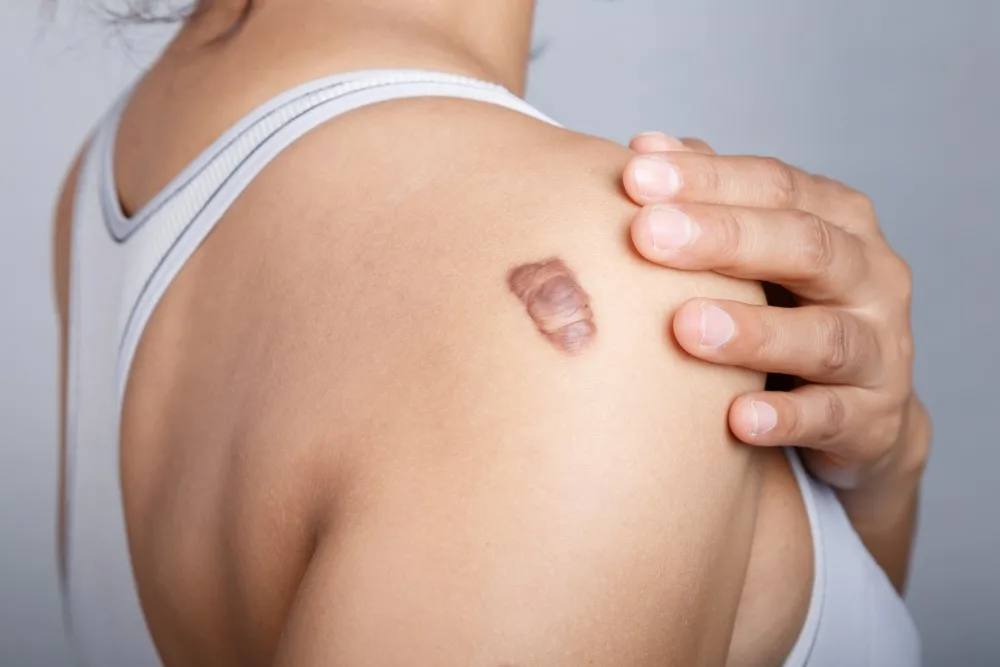Keloids are a challenging skin condition that many people struggle with, often leading to discomfort and lowered confidence. Unfortunately, misinformation and myths surrounding this issue prevent individuals from seeking proper care. With advancements in modern dermatology, Keloid Treatment in Islamabad has become more effective, safe, and tailored to individual needs. Yet, common misconceptions still stop people from getting the help they deserve. In this blog, we will address these myths, separate fact from fiction, and shed light on the reality of keloid treatment.
Myth 1: Keloids Are Just Like Normal Scars
One of the biggest misconceptions is that keloids are the same as regular scars. While both develop after an injury, keloids are different. They extend beyond the original wound boundary, grow larger with time, and rarely fade naturally. Unlike regular scars, keloids require professional treatment to improve their appearance and reduce discomfort.
Fact: Keloids are an overgrowth of collagen and need specialized management through methods like laser therapy, steroid injections, or surgical removal with preventive care.
Myth 2: Keloids Cannot Be Treated
Many people believe that keloids are permanent and untreatable. This belief often leads to frustration and acceptance of living with the condition.
Fact: With the latest techniques available in Islamabad, keloids can be effectively managed. Treatments like cryotherapy, corticosteroid injections, and advanced laser therapies can flatten, soften, and lighten keloids while reducing recurrence rates. Complete removal may not always be possible, but treatments significantly improve appearance and comfort.
Myth 3: Surgery Alone Will Cure Keloids
Another common myth is that surgical excision is enough to get rid of keloids. While surgery can remove the scar tissue, there is a high chance of regrowth if no additional measures are taken.
Fact: Today’s best practice involves combining surgery with preventive strategies such as radiation therapy, steroid injections, or laser treatments. This combination approach reduces the chances of recurrence and enhances long-term results.
Myth 4: Home Remedies Can Eliminate Keloids
People often try home remedies like applying oils, herbal pastes, or over-the-counter creams in hopes of shrinking keloids. While these may help with skin hydration or mild itching, they cannot address the deep collagen overgrowth that causes keloids.
Fact: Only medical treatments designed for keloids—such as cryotherapy, silicone gel sheets, or laser procedures—can produce visible results. Home remedies may provide comfort but cannot replace professional care.
Myth 5: Keloid Treatment Is Always Painful
Fear of pain is one of the main reasons patients avoid treatment. Many assume that all procedures for keloids are invasive and uncomfortable.
Fact: Modern treatments are designed with patient comfort in mind. Non-surgical options like laser therapy, corticosteroid injections, and silicone sheets are relatively painless. Even surgical procedures are performed under anesthesia, ensuring minimal discomfort.
Myth 6: Only Darker Skin Types Get Keloids
It is true that individuals with darker skin are more prone to keloids due to genetic factors, but this does not mean fair-skinned people cannot develop them.
Fact: Keloids can appear in people of any skin tone or ethnicity. The risk is higher among certain groups, but no one is entirely immune. Injury, acne, burns, or piercings can cause keloids in anyone.
Myth 7: Keloids Always Return After Treatment
Another discouraging myth is that keloids will always come back, no matter what treatment is done. This misconception stops many from even consulting a doctor.
Fact: While keloids do have a risk of recurrence, modern combination therapies greatly reduce this likelihood. For instance, surgery followed by radiation or laser therapy has shown significantly improved outcomes. With proper aftercare, recurrence can be minimized.
Myth 8: Keloid Treatment in Islamabad Is Too Expensive
Cost is often a concern for patients, and many assume that effective treatments are unaffordable.
Fact: Clinics in Islamabad now offer affordable and customized packages that cater to different budgets. The cost varies depending on the method chosen, the size and location of the keloid, and the number of sessions required. Investing in professional care also saves patients from wasting money on ineffective home remedies.
Myth 9: All Keloid Treatments Have Severe Side Effects
Some believe that all keloid treatments cause severe scarring, skin discoloration, or long-term complications.
Fact: When performed by experienced dermatologists or cosmetic surgeons, modern keloid treatments are safe and effective. Side effects are rare and usually temporary, such as mild redness or swelling. Choosing a reputable clinic ensures high safety standards.
Myth 10: Keloids Will Go Away on Their Own
The final myth is that keloids fade naturally over time. Unlike some scars, keloids often continue to grow larger and thicker if left untreated.
Fact: Keloids require medical intervention to improve. Delaying treatment can make them harder to manage and may require more advanced techniques later.
Importance of Professional Guidance
Debunking these myths highlights the importance of consulting qualified specialists for keloid treatment. Dermatologists and cosmetic surgeons in Islamabad carefully evaluate each patient’s condition and recommend personalized treatments that combine innovation with safety. Patients who seek professional help benefit from:
- Expert diagnosis of the keloid type and severity.
- Access to advanced technologies like laser and cryotherapy.
- Long-term results with minimized recurrence.
- A tailored approach that considers skin type, medical history, and lifestyle.
Final Thoughts
Keloids are often misunderstood, and the myths surrounding them can prevent people from seeking life-changing treatment. By addressing these misconceptions, patients can better understand their options and make informed choices. From non-surgical techniques like laser therapy to advanced surgical methods paired with preventive care, modern treatments offer real hope.





Comments